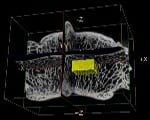Women now dominate the field of veterinary medicine — the result of a nearly 40-year trend that is likely to repeat itself in the fields of medicine and law.
That’s the conclusion of a new study that found three factors that appear to be driving the change: the 1972 federal amendment that outlaws discrimination against female students; male applicants to graduate schools who may be deterred by a growing number of women enrolling; and the increasing number of women earning Bachelor’s degrees in numbers that far exceed those of male graduates, says sociologist Anne E. Lincoln.
An assistant professor in the Department of Sociology at Southern Methodist University in Dallas, Lincoln is an expert on how occupations transition from being either male- or female-dominated.
Her study is the first of its kind to analyze the feminization of veterinary medicine from the perspective of examining the pool of applicant data to U.S. veterinary medical colleges from 1975 to 1995, Lincoln said.
As of 2010, the veterinary profession is about 50 percent men and 50 percent women, according to the American Veterinary Medical Association, while enrollment in veterinary medical colleges is about 80 percent women.
Departure from convention; new methodology
Conventional occupational research identifies a flip in the gender make-up of a profession by looking at the number of men and women who get hired into that profession, Lincoln said. The current study broke with that convention and instead measured the number of male and female applicants to veterinary medical colleges.
In looking at the applicants for each year, the study controlled for variables that could be a factor: class size, proportion of women on faculty, proportion of women in the classroom, increased tuition and declines in the profession’s average salary. Lincoln found no evidence that any of those factors was statistically significant in explaining why more women than men are applying, she said.
By quantifying the number of men and women attempting to enter veterinary medical colleges the study could determine whether feminization is caused by gender bias in the acceptance process. Lincoln found no evidence of acceptance bias.
Study finds preemptive flight; challenges long-held notions about women
“There was really only one variable where I found an effect, and that was the proportion of women already enrolled in vet med schools,” Lincoln said. “So perhaps a young male student says he’s going to visit a veterinary medical school, and when he sees a classroom with a lot of women he changes his choice of graduate school. That’s what the findings indicate.”
The study puts to rest the long-held notion that men are more concerned than women about the cost of tuition and salaries when choosing a professional field, according to Lincoln.
“There’s always been this notion for any field that feminizes that women don’t care about salaries because they have a husband’s earnings to fall back on,” Lincoln said. “But this study found that men and women are equally affected by tuition and salaries, and that what’s really driving feminization of the field is what I call ‘preemptive flight’ — men not applying because of women’s increasing enrollment. Also, fewer men than women are graduating with a Bachelor’s degree, so they aren’t applying because they don’t have the prerequisites.”
The U.S. Department of Education’s National Center for Education Statistics reports that for the academic year 1980-81, the number of men and women earning Bachelor’s degrees was about the same, around 460,000. From that year on, however, the number of women earning a Bachelor’s increased much faster than the number of men. For 2009-10, 811,000 women earned Bachelor’s degrees, compared to 562,000 men.
First study of its kind to look at college applicant data
Lincoln’s findings are reported online in “The Shifting Supply of Men and Women to Occupations: Feminization in Veterinary Education” in the international journal Social Forces. For a link to the journal abstract and more information, see www.smuresearch.com.
The Association of American Veterinary Medical Colleges made available data from its annual, confidential survey of all U.S. veterinary medical colleges for Lincoln to analyze.
The data represented the applications to each of the 27 veterinary medical colleges in existence in the United States from 1975 to 1995. After 1995, veterinary schools implemented substantially different application procedures, making comparisons between pre- and post-1995 data unviable for this study.
Title IX removed barriers to women in vet med
In 1960, the U.S. Census reported that the field of veterinary medicine was 98 percent male, Lincoln found. For the academic year 1969-70, the national average for veterinary medical college male enrollment was 89 percent.
Veterinary medicine began to shift after the 1972 passage of Title IX, the federal amendment that prohibits discrimination against female students. The amendment forever altered the way vet med colleges responded to female applicants, Lincoln said.
“I found that after 1972, when the barriers to entry were dropped, women began enrolling in larger numbers,” Lincoln said. “Male applicants dropped sharply after 1976, the first year that applicant statistics were collected.”
Vet med shifts in 50 years from 98 percent male to 50-50
By 2008-09, the national average for veterinary medicine male enrollment had declined to 22.4 percent. Cornell University’s enrollment, for example, is currently more than 80 percent female, according to the American Association of Veterinary Medical Colleges.
“It’s really remarkable that in the past 50 years the pendulum has swung the other direction. Today the profession is 50-50,” she said. “It takes time for the men to cycle out. But because the number of women enrolled has been greater than the number of men since 1984, there’s been a wave of women entering the profession.”
“That’s why this study is really pushing the boundaries,” Lincoln said. “This is an occupation that is changing even as I analyze it, so I can watch it as it’s changing. Indications are that it will continue to shift even further toward women, beyond the current 50-50.”
Feminization likely for law, medicine professions
The same phenomenon likely will be seen in coming years in the male-dominated fields of medicine and law, given the increasing numbers of women now entering those fields.
“We can use veterinary medicine as a predictor of what is going to happen in medicine and law,” Lincoln said. “It may take 27 years for medicine and law to become gender-integrated. The pharmacist profession earlier experienced this ‘occupational jostling.’ It takes decades for a profession to feminize because an occupation that is mostly male is going to have generational turnover as the more senior practitioners retire.” — Margaret Allen
SMU has an uplink facility on campus for live TV, radio or online interviews. To speak with an SMU expert or book an SMU guest in the studio, call SMU News & Communications at 214-768-7650.

























 A new study by research psychologists
A new study by research psychologists  When a flash was followed by its identical symbol, participants were five times more likely to say they had seen that symbol sometime before the experiment.
When a flash was followed by its identical symbol, participants were five times more likely to say they had seen that symbol sometime before the experiment. The video features many other respected paleontologists from around the world, all of them talking about the work they do and its importance to science and society. The goal of the video is to educate students, teachers and the public about vertebrate paleontologists and the importance of their work.
The video features many other respected paleontologists from around the world, all of them talking about the work they do and its importance to science and society. The goal of the video is to educate students, teachers and the public about vertebrate paleontologists and the importance of their work.